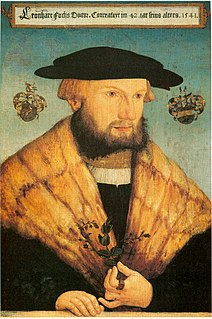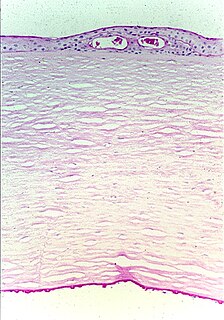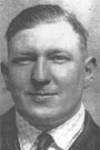
Emil Julius Klaus Fuchs was a German theoretical physicist and atomic spy who supplied information from the American, British, and Canadian Manhattan Project to the Soviet Union during and shortly after World War II. While at the Los Alamos National Laboratory, Fuchs was responsible for many significant theoretical calculations relating to the first nuclear weapons and, later, early models of the hydrogen bomb. After his conviction in 1950, he served nine years in prison in Great Britain and then moved to East Germany where he resumed his career as a physicist and scientific leader.

Leonhart Fuchs[ˈfʊks], sometimes spelled Leonhard Fuchs, was a German physician and botanist. His chief notability is as the author of a large book about plants and their uses as medicines, i.e. a Herbal Book. It was first published in 1542 in Latin. It has about 500 accurate and detailed drawings of plants, which were printed from woodcuts. The drawings are the book's most notable advance on its predecessors. Although drawings were in use beforehand in other Herbal books, Fuchs' Herbal book proved and emphasized high-quality drawings as the most telling way to specify what a plant name stands for.

Porophyllum ruderale is an herbaceous annual plant whose leaves can be used for seasoning food. The taste has been described as "somewhere between arugula, cilantro and rue." The plant is commonly grown in Mexico and South America for use in salsas. When fully grown, this plant grows to about 5 feet in height and 3 feet in diameter.

Fuchs' dystrophy, also referred to as Fuchs' corneal endothelial dystrophy (FCED) and Fuchs' endothelial dystrophy (FED), is a slowly progressing corneal dystrophy that usually affects both eyes and is slightly more common in women than in men. Although early signs of Fuchs' dystrophy are sometimes seen in people in their 30s and 40s, the disease rarely affects vision until people reach their 50s and 60s.
Fuchs Mizrachi School is a PK–12 private, Modern Orthodox Jewish, co-educational college-preparatory day school in Beachwood, Ohio, United States.

Ocotea porosa is a species of plant in the Lauraceae, often placed in the related genus Phoebe. It is commonly called imbuia or Brazilian walnut because its wood resembles that of some walnuts. The tree is a major commercial timber species in Brazil, used for high-end furniture, mostly as decorative veneers, and as flooring. The wood is very hard, measuring 3,684 lbf on the Janka scale. The wood is also fragrant with hints of nutmeg and cinnamon. The tree is also a popular horticultural tree in subtropical regions of the world. In its native habitat it is a threatened species.

Christian Fuchs is an Austrian professional footballer who plays as a left back for English club Leicester City.
In mathematics, in the area of additive number theory, the Erdős–Fuchs theorem is a statement about the number of ways that numbers can be represented as a sum of two elements of a given set, stating that the average order of this number cannot be too close to being a linear function.
Werner Fuchs was a German football player and trainer.

Erich Fuchs was an SS functionary who worked for the Action T4 euthanasia program, and for the Operation Reinhard phase of the Holocaust.

Ouroboros is an album by the Japanese noise musician Merzbow. It is named after the Ouroboros, a symbol depicting a serpent or dragon swallowing its own tail and forming a circle, and is dedicated to snakes.

Josef Fuchs is a retired Swiss racing cyclist. As an amateur he won two world championship medals in 1969 and 1971, both on the road and on track. He also won a few minor races and two stages of the Tour de l'Avenir and one of the Milk Race (1971).

Franz Fuchs is an association football player manager from Austria.
Lawrence H. Fuchs was a scholar of American studies and an expert on immigration policy. He was an author and university professor who founded the American studies department at Brandeis University, where he was the Meyer and Walter Jaffe Professor of American Civilization and Politics.
Aerenicini is a tribe of longhorn beetles of the Lamiinae subfamily.
Psapharochrus is a genus of beetles in the family Cerambycidae, containing the following species:
Pseudoplexaura porosa, commonly known as the porous sea rod or the porous false plexaura, is a species of gorgonian-type colonial octocoral in the family Plexauridae. It is native to the Caribbean Sea and the Gulf of Mexico.

Doris Gudrun Fuchs is a retired American gymnast who won four gold medals at the 1963 Pan American Games. She competed in all artistic gymnastics events at the 1956 and 1960 Summer Olympics and finished ninth with the American team three times: all-around in both games and in the team portable apparatus in 1956. Her best individual result was eighth place on uneven bars in 1960. Fuchs attended the 1964 Olympics as a reserve. In 1982 she was inducted into the U.S. Gymnastics Hall of Fame.
Coscinesthes porosa is a species of beetle in the family Cerambycidae. It was described by Henry Walter Bates in 1890.
Esthlogena porosa is a species of beetle in the family Cerambycidae. It was described by Henry Walter Bates in 1872. It is known from Mexico, Honduras, Costa Rica, Panama, and Nicaragua.











